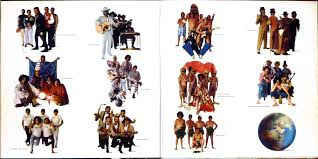 (1943)
(1943)Directed by John M. Stahl
Written by Nunnally Johnson from a novel by Arnold Bennett
Starring Monty Woolley, Gracie Fields, Laird Cregar, Una O’Connor, Eric Blore
IMDB Entry
Fame is fickle. Many major stars of the 30s and 40s are virtually unknown today/ This is especially true if they were stars outside the US and only had moderate success over here. Others had US success, but the memory of them is faded away because their films are fading away. Holy Matrimony is a perfect example.
Priam Farll (Monty Woolley) is considered England’s greatest artist, but he has no use for the fame and fortune, so he moves to a small house on the other side of the world to be left alone, accompanied only by his butler Henry Leek (Eric Blore). Farll is summoned to the UK to be knighted, but when they get there, Leek dies of pneumonia, and Farll decides to pose as Leek to avoid the bother.
He quickly realizes this is a mistake, but is unable to convince anyone of his real identity. He’s about to be arrested for disrupting his own funeral, when Alice Chalice (Gracie Fields) spots him. She had been corresponding with Leek with an eye to matrimony, and confirms his identity as Leek, who she has only seen in a photograph of Leek and Farll that didn’t specify who was who. Farll is attracted to Alice’s personality and marries her.
All is well until Leek’s real wife show up. And Farll decides he needs to support Alice better and returns to painting. His art is purchased by the unscrupulous art dealer Clive Oxford (Laird Cregar), who sells them as undiscovered works of Farll. Then things get complicated.
Monty Woolley was a close friend of Cole Porter* and a Broadway director. He became a major Broadway star playing Sheridan Whiteside in the classic “The Man Who Came to Dinner” and reprised his role for the film version. Here, he plays a similar character, a curmudgeonly man who refuses to compromise.
Gracie Fields, though, was a major star in the UK, primarily as a singer of music hall tunes. She became a movie star in 1931 with a series of hit films, all of which didn’t make much impression on this side of the pond. Holy Matrimony was her first US film, and was impressive enough for her to make several more. Her Alice is delightfully warm and understanding.
The film is populated by several of the great character actors of the time. Eric Blore made a career of playing butlers and was almost certainly the first people they thought of when the film came up. Una O’Connor, who plays Leek’s wife, was Hollywood’s favorite old biddy, and is most notable as the maid in Bride of Frankenstein. Franklin Pangborn (best known as the bank examiner in The Bank Dick) has a small role as Farll’s cousin and future science fiction icon Whit Bissell plays Leek’s son.
Then there’s Laird Cregar. This movie doesn’t quite let him display the urbane wit he showed in Heaven Can Wait, but he’s an interesting presence.
The movie was successful and the studio gave Fields a contract. Alas, she was unable to duplicate her success and eventually returned to England, where she was a beloved figure. Woolley never duplicated the success of Whiteside, though he continued to act.
___________________________________________________________
*He appeared as himself in the Porter biopic Night and Day


